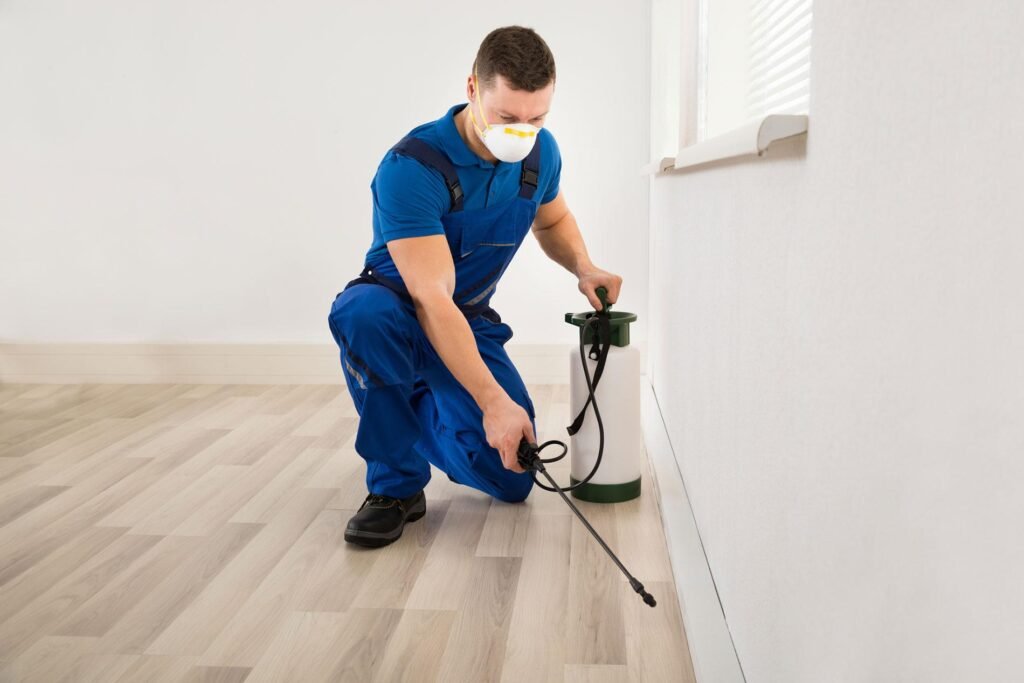If you want to maintain a pest free home, pesticides can prove to be an amazing tool. However, they must be used with care with proper Pest Control Cranbourne.
In this blog post, we will provide you with some important pieces of advice on safely using pesticides at home. So let’s not wait any longer and jump right into it!
Understanding Pesticides
Before diving into the safe use of pesticides, it’s important to understand what they are. Pesticides are substances designed to prevent, destroy, repel, or mitigate any pest. They can be chemical or biological agents, with each type having different properties and risks. Common types include insecticides (for insects), herbicides (for weeds), fungicides (for fungi), and rodenticides (for rodents). Each pesticide has specific usage instructions, which must be followed meticulously.
Choosing the Right Pesticide
Selecting the appropriate pesticide for your specific problem is crucial. Identify the pest you are dealing with and choose a product labeled for that pest. It’s important to read the label carefully to understand the active ingredients, safety precautions, and application instructions. If you’re unsure, consult a professional or your local cooperative extension service for advice. Using the wrong pesticide can be ineffective and dangerous.
Preparing for Application
Preparation is key to safe pesticide use. Start by reading the entire label and any accompanying literature. Pay close attention to the recommended personal protective equipment (PPE), such as gloves, masks, and protective clothing. Ensure you have everything you need before you begin.
Clear the area of children, pets, and food items. If you’re applying pesticides indoors, cover or remove all utensils, dishes, and surfaces where food is prepared. Ventilate the area by opening windows and doors. Outdoors, make sure to cover or remove toys, pet dishes, and other items that could come into contact with the pesticide.
Mixing and Diluting Pesticides
If the pesticide requires mixing or dilution, do so carefully according to the instructions. Use a dedicated container for mixing pesticides, never one used for food or drink. Mix outdoors or in a well-ventilated area. Wear the recommended PPE during this process to avoid exposure to concentrated chemicals.
Applying Pesticides Safely
Apply pesticides exactly as directed on the label. Overuse can be harmful and counterproductive. Use only the amount necessary to achieve control. Follow these guidelines for safe application:
– Indoors: Apply pesticides only to areas specified on the label. Avoid treating areas where food is prepared or consumed unless the product is specifically labeled for such use. Use baits and traps where possible, as these are less likely to cause exposure.
– Outdoors: Apply pesticides when the weather is calm to prevent drift. Avoid application during high winds or when rain is expected soon after application. Be mindful of runoff, which can contaminate water sources. Apply pesticides in the early morning or late evening when beneficial insects are less active.
Post-Application Safety
After applying pesticides, clean up thoroughly. Wash your hands, face, and any other exposed skin with soap and water. Launder any contaminated clothing separately from other laundry. Store leftover pesticides in their original containers, sealed tightly and labeled clearly. Keep them out of reach of children and pets, ideally in a locked cabinet.
Environmental Considerations
The impact of pesticides on the environment can be significant. Non-target organisms, including beneficial insects, birds, and aquatic life, can be harmed by pesticide use. To minimize environmental impact, consider the following:
– Integrated Pest Management (IPM): This approach combines different pest control methods, such as biological, cultural, mechanical, and chemical, to minimize reliance on pesticides. IPM focuses on long-term prevention and control through practices like crop rotation, habitat manipulation, and the use of resistant varieties.
– Targeted Application: Apply pesticides only where and when necessary. Spot-treat infestations rather than blanket applications. This reduces the amount of pesticide released into the environment.
– Choose Less Toxic Options: Whenever possible, select pesticides that are less harmful to non-target species and the environment. Biological pesticides, such as those derived from natural sources, are often less toxic.
Emergency Procedures
Despite taking precautions, accidents can happen. Knowing how to respond to a pesticide emergency is crucial:
– Exposure: If someone is exposed to a pesticide, follow the first aid instructions on the label immediately. For skin contact, wash the area thoroughly with soap and water. If the pesticide is ingested, do not induce vomiting unless instructed by the label or a medical professional. Seek medical attention promptly.
– Spills: In case of a spill, contain it as quickly as possible. Use absorbent materials like sand or kitty litter to soak up liquid spills. Dispose of contaminated materials according to local regulations. Ventilate the area and wash exposed surfaces with soap and water.
Conclusion
It is important for you to understand that using pesticides at home requires careful planning and execution. By understanding the factors mentioned above, you can protect your home and family from pests without putting them at risk.





how many iu of hgh per day
References:
hgh 2 einheiten wirkung (https://mystery.presscont.cz/author/stickneck3)
dianabol first cycle
References:
what to take with Dianabol cycle; http://www.stes.Tyc.edu.tw/xoops/modules/profile/Userinfo.php?uid=3660174,
dianabol cycle benefits
References:
test e and dianabol cycle (https://askquestions.net)
dosage hgh bodybuilding
References:
hgh and test cycle (https://gspcareer.com)